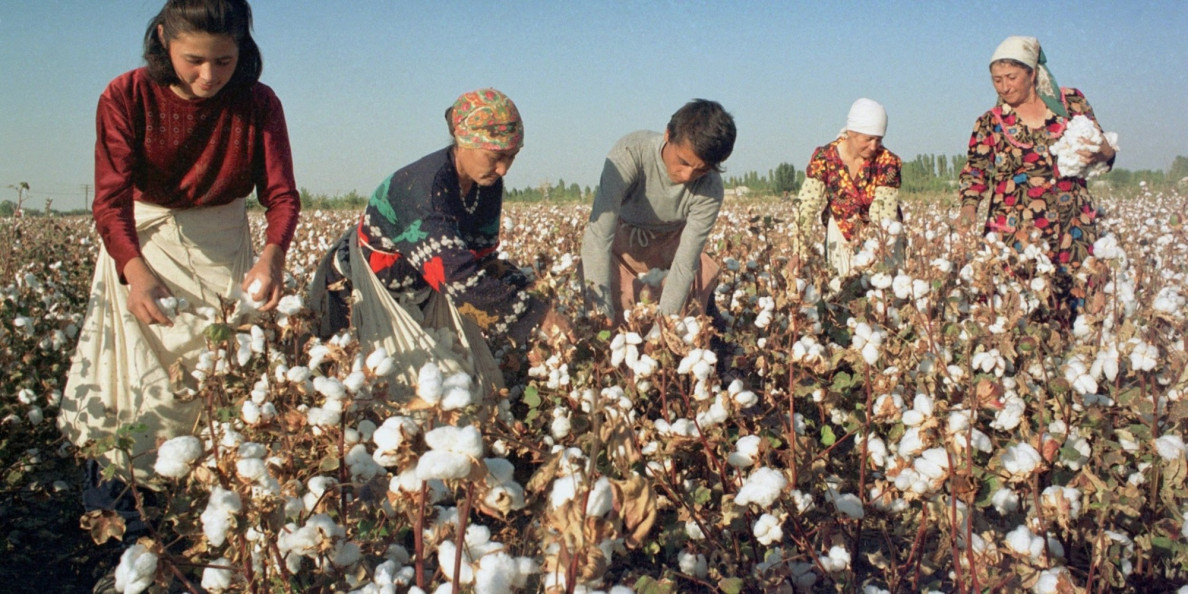The prospects to resume buying cotton from Uzbekistan have improved for Bangladesh after the United States lifted the ban on sourcing the key textile raw material from the country following significant progress in ending forced labour.
Until 2007, when a boycott campaign was launched against Uzbek cotton, the central Asian country was the single largest sourcing destination for Bangladesh, accounting for about 45 per cent of cotton imported.
But the import started depleting after international clothing retailers and brands, especially the European and American ones, imposed the ban on using Uzbek cotton for employing child and forced labour in cultivating and harvesting the textile raw material.
The ban led western retailers and brands to instruct garment-supplying nations, including Bangladesh, not to use cotton from the country.
They also threatened that they would not purchase the garment items if they were made from the yarn produced from Uzbek cotton.
As a result, Bangladeshi mill users and spinners stopped importing cotton from the country.
But the door to buy cotton from the country is set to reopen after the US, in March 2019, removed Uzbek cotton from a list of products that are produced with forced child labour.
"So, an opportunity for us has been created in sourcing cotton at competitive prices," said Mohammad Ali Khokon, president of the Bangladesh Textile Mills Association (BTMA).
He is now visiting Uzbekistan and has discussed cotton issues with the Uzbek government and other stakeholders.
"The quality of Uzbek cotton is good, and it is expected that the country can supply the cotton at competitive prices," Khokon said.
The boycott campaign was launched in an attempt to force Uzbekistan to abandon a long-running practice of sending students and public sector employees, including teachers and doctors, to pick cotton for meagre pay, said Reuters in a report recently.
It has been supported by the likes of Amazon, Calvin Klein, Adidas and Inditex, and today the nation of 34 million people mostly sells cotton and textiles on Asian markets, which it says means lower prices and limited growth opportunities.
Some 330 global apparel brands and retailers have pledged since 2007 to work to ensure that forced labour does not find its way into their products under an initiative launched by the Cotton Campaign, which aimed to end the state-sponsored forced labour system.
President Shavkat Mirziyoyev has gradually dismantled the forced labour system, explicitly barring provincial authorities from mobilising students and public sector workers for cotton harvesting, according to Reuters.
In a press release last year, the Cotton Campaign acknowledged and applauded progress made on reforms yet also registered serious concerns over a lack of progress on civil society freedoms.
"Together with brands and other local and international stakeholders, the Cotton Campaign is developing a robust framework to monitor and remediate forced labour, empower workers and farmers, and encourage sourcing from Uzbekistan," it said.
In the same press release, Nate Herman, senior vice-president for policy at the American Apparel & Footwear Association, said: "We recognise and are heartened by the progress that Uzbekistan has made toward ending forced labour, and members look forward to considering sourcing from Uzbekistan."
Uzbekistan produces nearly two million bales of cotton a year. Most of them are used by the local spinners.
Khorshed Alam, chairman of Little Group, a local spinner, says Uzbekistan may be a good source for cotton. But Uzbekistan needs to use the Port of Tehran to ship the product that might be expensive now.
Moreover, over the last 15 years, Uzbek entrepreneurs have set up many local spinning mills, so cotton in bulk quantities might not be available, he said.
In the absence of cotton from Uzbekistan, Bangladesh has diversified sources.
African countries are now the biggest source of cotton, accounting for around 40 per cent of the raw material imported.
Currently, 26 per cent of cotton is imported from India.
Over the years, Bangladesh has cut its reliance on Indian cotton as the neighbouring country frequently stops the supply of the raw material without prior notice, creating uncertainty for the $10-billion primary textile sector and the $41-billion garment industry.
The US and Australia are major sources for finer cotton, preferred by international retailers and brands.
Some 11.15 per cent of cotton is imported from the US, 4.65 per cent from Australia, and 11 per cent from the Commonwealth of Independent States.
Bangladesh depends entirely on imports for the vital raw material of the garment industry.
In 2020, the country imported 8.2 million bales of cotton at the cost of $3 billion, according to the BTMA.
Πηγή: thedailystar.net

